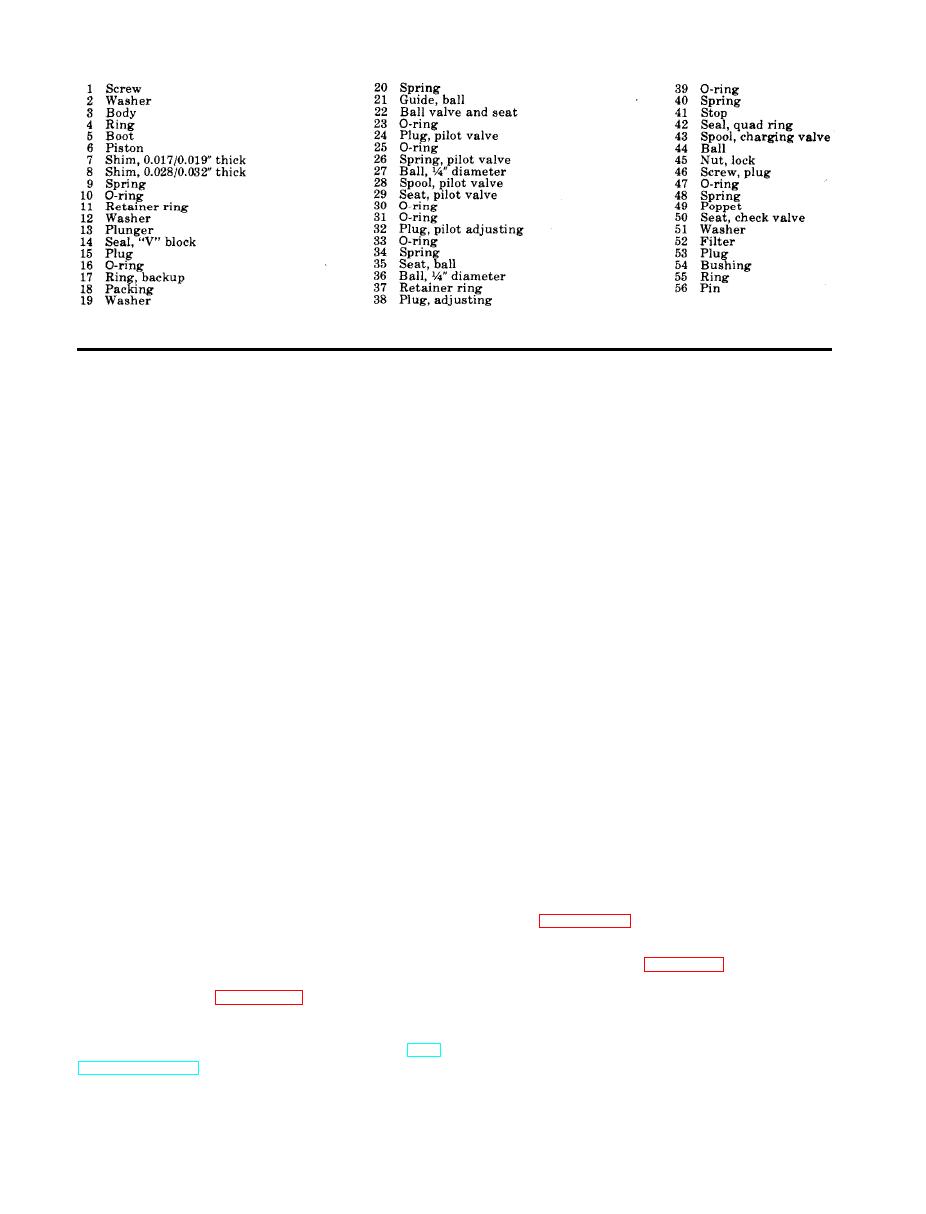 |
|||
|
|
|||
|
Page Title:
Hydraulic Brake Accumulator Cylinder |
|
||
| ||||||||||
|
|
 TM 10-3930-242-34
Figure 5-10. Brake valve, disassembly and reassembly-Continued.
5-13. Hydraulic Brake Accumulator Cylinder
components beyond the brake would not oper-
ate. After the brakes have been applied a
a. General. The accumulator is provided to
number of times, the pressure decreases to a low
s t o r e energy for a limited number of brake ap-
l i m i t , at which time the accumulator recharges.
plications in case the engine stops running. The
The pressure is the low limit that valve starts to
a c c u m u l a t o r cylinder has a free riding piston.
r e c h a r g e the accumulator. The high limit is the
N i t r o g e n is introduced through a valve on the
a d j u s t a b l e pressure, and once this is set au-
end of the cylinder to charge the cylinder. After
t o m a t i c a l l y , brake valve design determines the
the cylinder has been charged, oil from the hyd-
low limit or cut in pressure to start the recharge
raulic system enters the cylinder at the opposite
c y c l e . The high limit is adjusted by turning the
end, forcing the piston toward the nitrogen,
pilot valve adjusting plug (32). One full turn of
compressing the nitrogen to approximately
the plug changes the limit by 200 psi, turn by
1,300 psi.
100 psi and by 50 psi. The high limit is raised
b. Removal.
by screwing the plug into the body and lowered
by screwing the plug out of the body.
WARNING
(a) Fill pump with hydraulic oil and at-
Bleed the brake system pressure by re-
t a c h it to accumulator port on valve.
peated application of the brakes with the
(b) Pump up valve until a decisive click is
e n g i n e stopped, until the low pressure
heard, caused by shifting of pilot valve, and note
w a r n i n g buzzer sounds. Continue to
gage reading. The reading should be 1,300 psi, if
apply brakes several times to further re-
not, adjust the pilot valve plug (32).
d u c e accumulator pressure. Carefully
(c) After adjusting high limit pressure,
open bleed valves at each automatic slack
let the pressure leak down until another click is
a d j u s t e r to bleed off pressure to the
h e a r d when the low pressure reaches between
wheels. Failure to bleed pressure from
650-550 psi.
b r a k e system before servicing or per-
forming maintenance function may result
( 3 ) While pressure testing valve, check for
in damage to equipment and serious in-
l e a k a g e . Leakage from either the brake port or
jury to personnel. Use only dry nitrogen
r e t u r n port should be less than 60 drops per
gas when servicing the accumulator.
minute. No leakage is permissible from the
pressure port (38). It is not necessary to exceed
Refer to figure 5-11 and remove the hydraulic
1,900 psi for testing pressure as system pressure
b r a k e accumulator cylinder.
is always less.
f. Installation.
a s s e m b l e the hydraulic brake accumulator in
(1) Refer to figure 5-9 and reinstall the
n u m e r i c a l sequence.
b r a k e valve.
d. Cleaning and Inspection.
( 2 ) Install the access panel under the left
(1) Clean the accumulator parts,
fender and install driver's floor plate (TM
( 2 ) Inspect hose for deterioration.
10-3930-242-12).
|
|
Privacy Statement - Press Release - Copyright Information. - Contact Us |